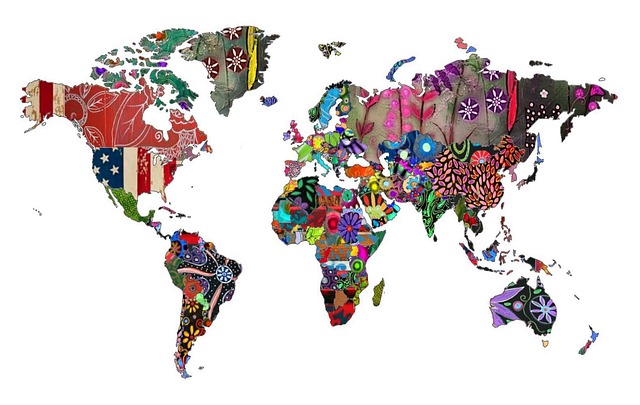A storm forecast to be the strongest to hit Myanmar in more than a decade made landfall near the Bangladesh border on Sunday, raising fears of a humanitarian catastrophe.
The storm moved ashore Sunday afternoon in the coastal area around Cox’s Bazar, according to Bangladesh’s meteorological department. That is the Bangladeshi city that is home to the world’s largest refugee encampment.
By Sunday morning, maximum sustained winds had reached 160 miles per hour, with gusts surpassing 180 miles per hour, according to the Joint Typhoon Warning Center, making it a Category 5 storm. This is the highest rating on the Saffir-Simpson Scale and indicates potential for catastrophic damage.
Waves were expected to reach up to 20 feet off the Rakhine coast, according to the Myanmar Ministry of Foreign Affairs. There were reports from Myanmar of damaged homes and boats, and one social media user posted a clip appearing to show the moment a communication tower toppled over in strong wind.
Officials and storm watchers expressed cautious hope, however, that the region could be spared the storm’s worst possible damage, as it weakens over land. The Joint Typhoon Warning Center predicted maximum sustained winds of up to 120 mph and gusts of 150 mph over the next 12 hours.
Mostofa Kamal, a weather and climate researcher at the University of Saskatchewan, wrote on social media that as the center of the storm began passing between Saint Martin Island and Maungdaw District in Myanmar, the tide was going out. This mitigates the effect of storm surge.
“So far, the cyclone is passing through the north coastal area of Cox’s Bazar, and no reports of damage have been received as of yet,” said Muhammad Shaheen Imran, the district administrator of Cox’s Bazar.
Bangladeshi officials said they expected the cyclone to pass by the afternoon.
The storm, Cyclone Mocha, formed over the southern Bay of Bengal on Thursday and has been drenching western Myanmar as it churned northeast, with heavy rain, strong winds and storm surges forecast to continue through Sunday, according to the Global Disaster Alert and Coordination System.
Days before the storm hit, Myanmar and Bangladesh began deploying thousands of volunteers and ordering evacuations from low-lying areas, Agence France-Presse reported, in a region that is home to some of the world’s poorest people, who are especially vulnerable to increasingly severe weather events.
In Myanmar, the risk of devastation is compounded by its ongoing civil war, which has displaced some 1.8 million people across the country, with the region south of the Bangladesh border being an active fighting zone and home to several large refugee camps.
In Cox’s Bazar, more than 200,000 people had been sent to 1,600 shelters. There is capacity to accommodate around 500,000 people, according to district officials.
More than a million Rohingya people live in the sprawling camps.
The Explosive Ordnance Risk Education organization in Myanmar has also issued a warning to the public regarding the hazards posed by land mines and unexploded ordnance during the impending storm.
The World Food Program has secured enough food to provide for 400,000 people in Rakhine State and neighboring areas for a month.
“Cyclone Mocha is heading to areas burdened by conflict, poverty, and weak community resilience,” said Sheela Matthew, the deputy country director for the agency, in a statement. “They simply cannot afford another disaster.”
With a storm of this intensity, storm surge — the bulge of water that is pushed with the winds as a storm nears the coast — will also be a major concern near the cyclone’s landfall and to the south of it.
Storm surge is often the greatest threat to life and property, according to the Hurricane Center.
Mocha looks likely to be the strongest storm to make landfall in Myanmar since Cyclone Giri, which in 2010 packed winds of 143 m.p.h., according to the National Oceanic and Atmospheric Administration’s historical cyclone tracks. That storm killed at least 45 people in Myanmar.
Cyclones are highly destructive. The term “cyclone” refers to a type of tropical cyclone — the umbrella term for all such storms, like hurricanes and typhoons — that forms in the Bay of Bengal or the Arabian Sea, both in the northern Indian Ocean.
Scientists say that climate change has helped intensify storms because the unusually warm ocean temperatures provide more energy to fuel them.
Cyclone Mocha comes as a deadly heat wave has been searing Southeast Asia for weeks. In April, Dhaka, the capital of Bangladesh, hit 105.1 degrees, its highest temperature in six decades.
The Bay of Bengal, in the northeastern part of the Indian Ocean, has had a long history of major storms.
In 2008, Cyclone Nargis became the second-deadliest tropical cyclone on record and the deadliest in Myanmar, killing more than 135,000 people. In 2007, Cyclone Sidr struck Bangladesh, killing more than 3,000 people.

